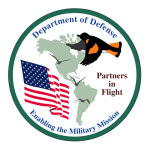BIRD CHECKLIST
NAVAL AIR STATION
PENSACOLA
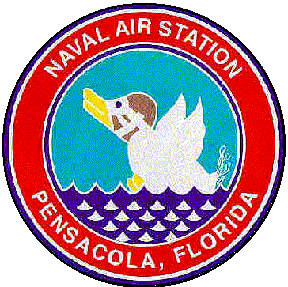
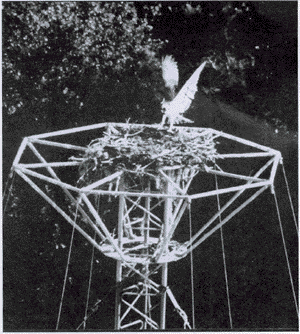
BIRDS OF NAS PENSACOLA
DATE:________________
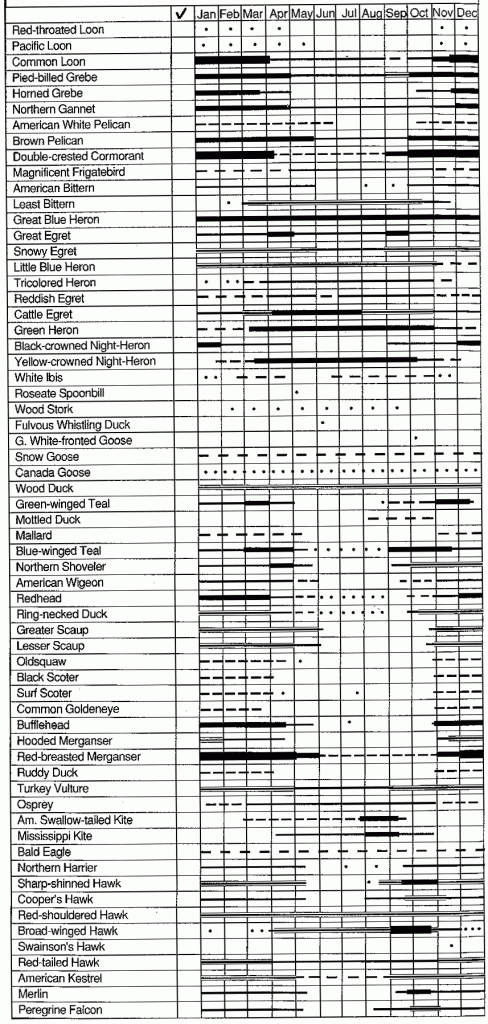
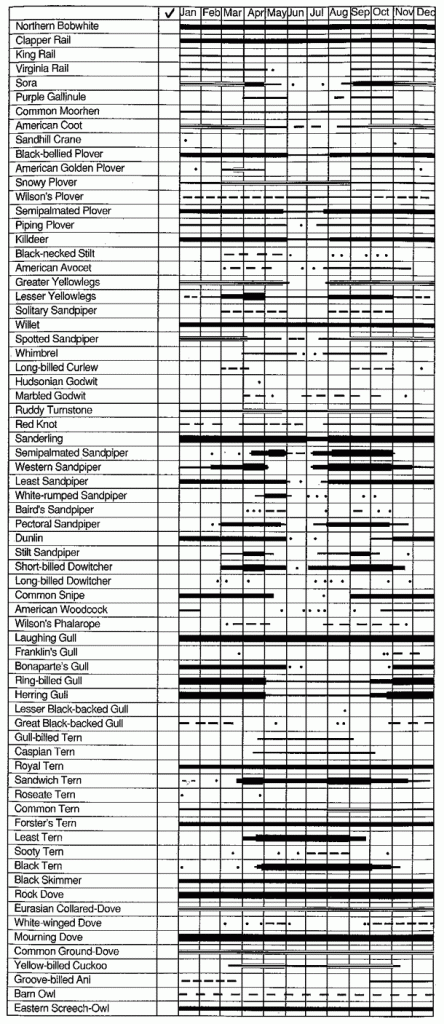
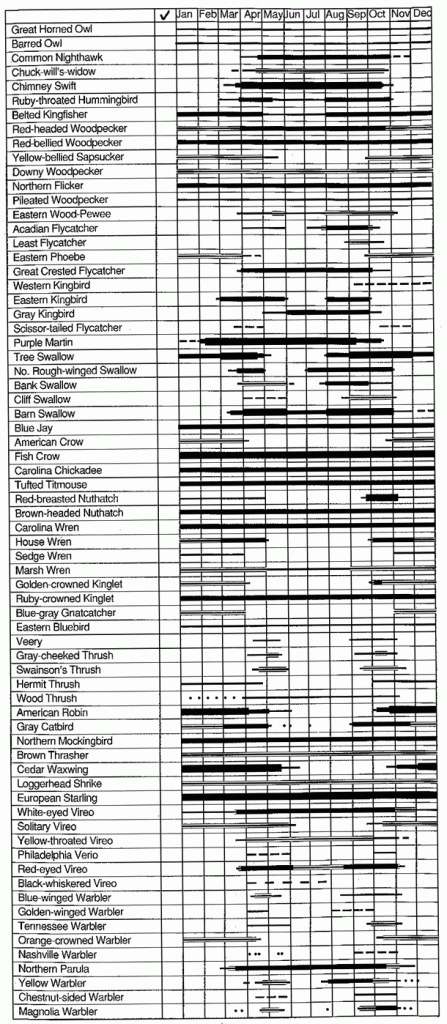
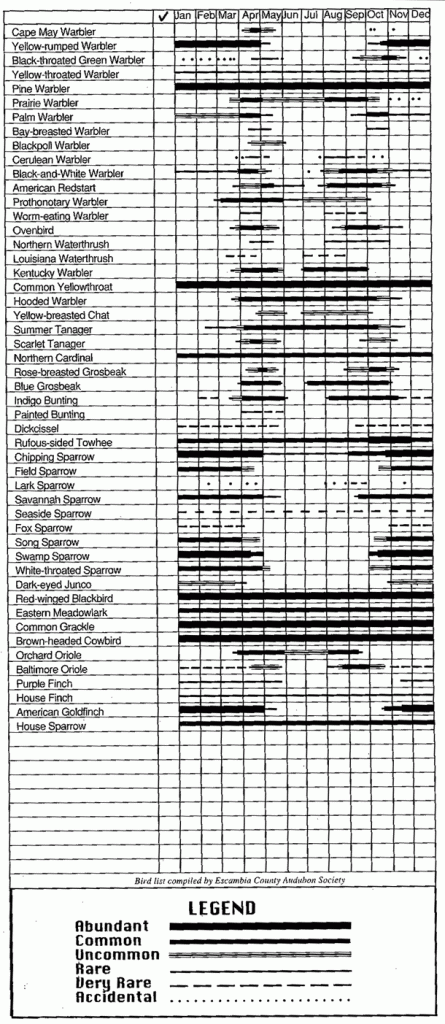
NAVY RESOURCES AND LAND MANAGEMENT PROGRAM
The Navy and Marine Corps manage more than four million acres worldwide. Much of this land is located in sensitive wetlands along valuable coastlines, some of the most ecologically significant areas in the world. The location of our real estate holdings makes it imperative that we plan and execute our various military missions in harmony with our environment. It is a Department of the Navy goal to promote an environmental protection ethic within the Navy workforce.The Department of the Navy supports numerous partnerships with other Federal, State, local and private resource groups to promote such programs as the North American Waterfowl Management Plan, Neotropical Migratory Bird Conservation, Wetlands Protection and Enhancement, and Watchable Wildlife.To succeed in its mission, and to earn public confidence, the Navy must emphasize resource stewardship in every aspect of its land use. It does. Come see for yourself and discover our resources.
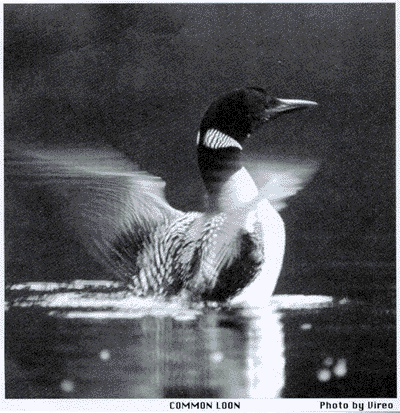
NAVAL AIRSTATION PENSACOLA
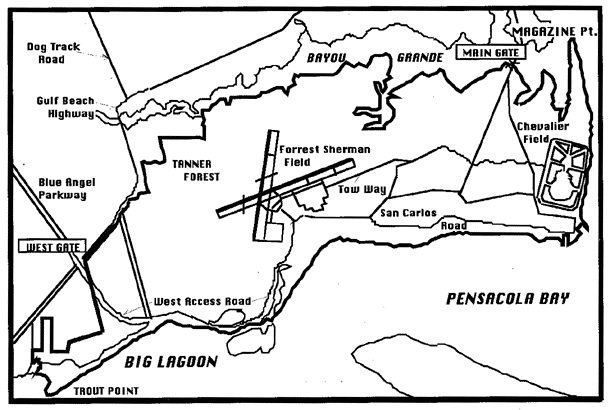
Welcome to Naval Station, Pensacola, located along the Gulf of Mexico in the panhandle of Northwest Florida. Discovered by Spanish explorers in 1559, Pensacola became the home of a Navy Yard in 1825, and the nations first Naval Air Station in 1914,- the ‘Cradle of Naval Aviation.’
NAS Pensacola’s mission involves primary training for naval aviators and aircrew personnel as well as basic and advanced training for student flight officers. In addition; JAS Pensacola serves as home to 53 DoD tenant commands and 30 other agencies. A combined work force of 11,000 military and civilians make up the population of the station: The installation occupies 6,705 acres of land, 5,607 at the main station, plus outlying landing fields Bronson and Choctaw. Landholdings include 5,000 acres of forests, wetlands, and open ground with 18 miles of shoreline along Pensacola Bay, the Intercoastal waterway, and Bayou Grande. All are excellent habitats and migratory routes for many species of birds.
With a very diverse landholding and a long-term responsibility for proper stewardship, natural resources management is a station priority. Trout Point, the most unique habitat on site, has one mile of original shoreline with native wetland vegetation, an Osprey nest, and a Heron Rookery. An area of Tanner Forest, with Longleaf and Sand Pine barrens is dedicated to wildlife and planned for mountain-bike trail. Pine forests are burned for understory control, species selection, and for wildfire prevention. Lighthouse Trail passes by a 350+ year old Live Oak, likely used as a navigation point for ships entering the harbor before the lighthouse was installed. Bayou Grande, northern border of the station, has a Nature Trail with a suspension bridge. A dredge spoil holding facility forms two large ponds with ideal shorebird habitat; public access is available. For additional information, contact the Natural Resources Management Staff at 904-452-3900.
The U.S. Navy and Partners in Flight are cooperating on an international program to promote the conservation of migratory birds. For information, contact DoD Partners in Flight by email or call 540-349-9662.

